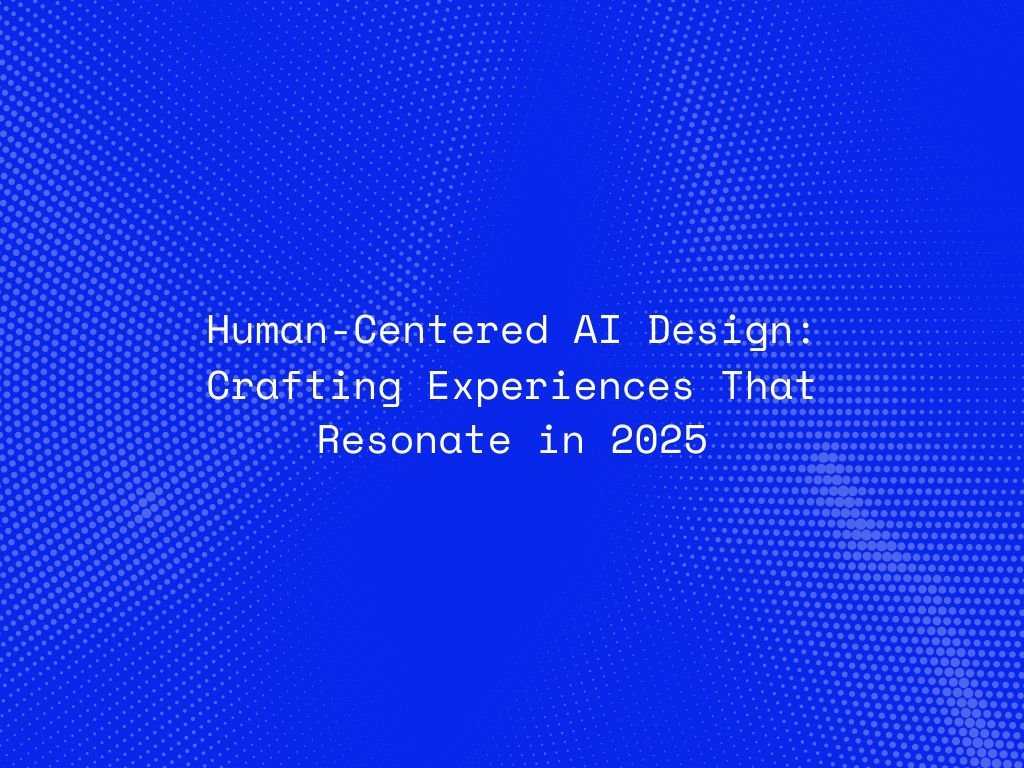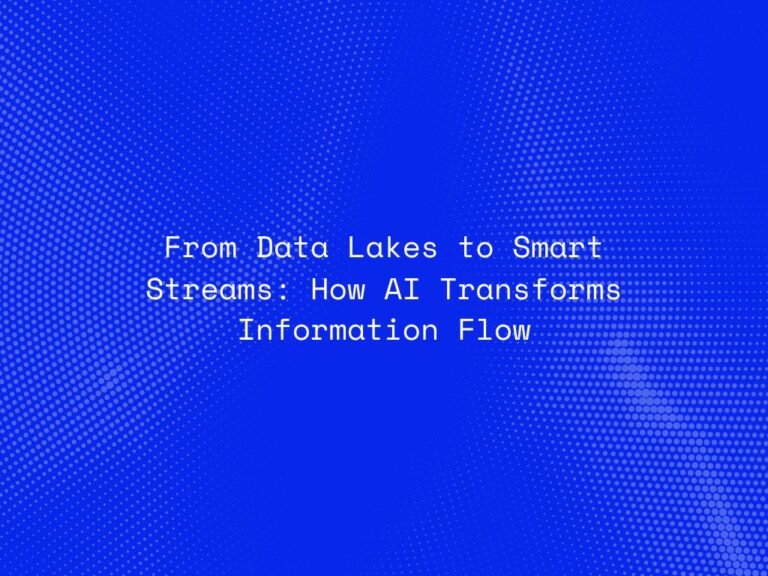Artificial Intelligence is no longer confined to labs or back-end systems. In 2025, it’s embedded in everything—from mobile apps and customer support to healthcare diagnostics and productivity tools. But as AI becomes increasingly present in daily life, one principle stands out as essential: designing AI around people—not the other way around.
Enter Human-Centered AI Design—a multidisciplinary approach that combines user experience (UX) design, psychology, ethics, and AI engineering to create systems that are not only intelligent but also intuitive, inclusive, and emotionally resonant.
What Is Human-Centered AI Design?
Human-centered AI design is the practice of building AI systems that prioritize human values, behaviors, and needs. It ensures AI aligns with how people think, feel, and interact with technology—emphasizing:
-
Usability: Can users intuitively understand and control the AI?
-
Trust: Does the system behave transparently and predictably?
-
Empathy: Does the experience acknowledge users’ emotional and social contexts?
-
Ethics: Are biases minimized, and privacy preserved?
The goal is not just smarter systems—but systems that serve people meaningfully.
Why Human-Centered AI Matters in 2025
Several shifts are driving the importance of this design philosophy:
1. AI Is Everywhere
From enterprise tools to smart homes, AI is deeply woven into daily routines. Poorly designed interactions lead to frustration, mistrust, or even harm.
2. Regulation Is Catching Up
Frameworks like the EU AI Act and emerging global standards are demanding transparency, fairness, and explainability—key tenets of human-centered design.
3. Multimodal AI Requires New Interfaces
LLMs that understand text, image, audio, and video create richer but more complex experiences. Design must simplify these into usable, human-friendly interfaces.
4. Emotional Intelligence Is Becoming a Competitive Edge
Products that understand context and respond empathetically win user loyalty—especially in fields like mental health, education, and customer service.
Key Principles of Human-Centered AI Design
1. Transparency and Explainability
Users need to understand how AI systems make decisions. This includes:
-
Showing what data is being used
-
Explaining why a recommendation was made
-
Offering alternatives or controls
Tools like model explainers, confidence scores, and visual decision trees help bridge the gap between complex algorithms and user comprehension.
2. Control and Consent
Human-centered AI gives users control over:
-
Whether AI is used at all
-
What data is collected
-
When and how suggestions are acted upon
Examples include toggles for automation, feedback loops to fine-tune recommendations, and opt-outs for data tracking.
3. Ethical Defaults
Design choices should prevent harm by default, especially in high-stakes environments. This includes:
-
Minimizing algorithmic bias through diverse training data
-
Ensuring equitable access to AI tools
-
Avoiding manipulative UX (e.g., dark patterns)
Ethical design isn’t an afterthought—it’s part of the architecture.
4. Inclusive and Accessible Design
AI should be usable by all. This means:
-
Designing for neurodiverse, disabled, and global populations
-
Supporting multilingual and multimodal interaction (voice, touch, vision)
-
Avoiding assumptions about users’ preferences or abilities
Inclusivity drives innovation—and unlocks broader impact.
5. Emotional Intelligence
Especially in chatbots, assistants, and mental health apps, AI must recognize tone, sentiment, and user intent—and respond appropriately. This doesn’t mean mimicking emotion but responding with context-aware empathy.
Examples of Human-Centered AI in 2025
Healthcare
-
AI systems that explain diagnoses clearly to patients
-
Assistive bots that help elderly users navigate medication schedules with kindness and patience
Education
-
Adaptive learning platforms that respond to student frustration or boredom with personalized encouragement
-
Tutors that explain answers, not just give them
Customer Support
-
Chatbots that escalate gracefully when they detect dissatisfaction
-
Systems that remember user preferences and context across channels
Workplace Tools
-
AI writing assistants that offer multiple tone suggestions
-
Calendar bots that suggest meeting times based on personal work rhythms—not just availability

Challenges and Design Trade-offs
-
Balancing Simplicity vs. Control: Too much automation can feel opaque; too much control can overwhelm.
-
Addressing Bias Without Overcorrecting: It’s hard to design for fairness without introducing new forms of bias.
-
Maintaining Performance While Adding Transparency: Making a model explainable can sometimes reduce its accuracy or speed.
-
Avoiding Over-Personalization: Users want relevance, not creepiness.
These tensions require careful design thinking, stakeholder input, and iterative testing.
The Future of Human-Centered AI
In the next few years, expect major trends like:
-
Contextual AI: Systems that understand environmental, emotional, and social cues
-
Agent-based UX: Users interacting with swarms of AI agents, not just single bots
-
Personal AI: AI that’s deeply embedded into a user’s digital identity and workflow
-
Collaborative Intelligence: Humans and AI systems working together symbiotically, each enhancing the other’s capabilities
Ultimately, the most successful AI systems will not be the most powerful—but the most human-aware.
Conclusion
Human-centered AI design is no longer optional. In 2025, it is mission-critical—guiding the development of intelligent systems that people trust, enjoy, and rely on. As businesses and builders shape the next generation of AI products, designing with empathy, ethics, and inclusivity at the core isn’t just the right thing to do—it’s the smartest way forward.




